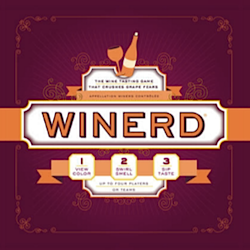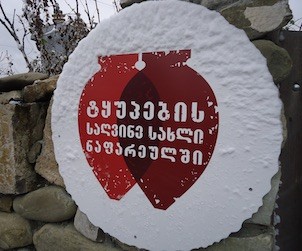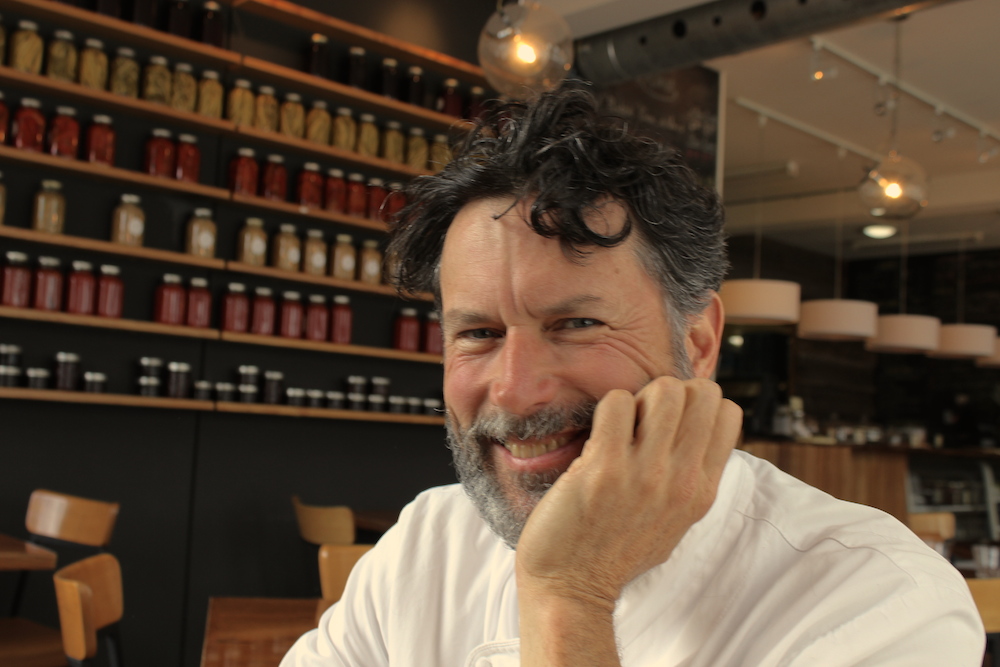by Dean Tudor
World Wine Watch‘s Dean Tudor returns with his lists of food and wine books in time for the 2011 holidays. Click here for the whole series (to date). Look for these books at Good Food Fighter boutiques like The Cookbook Store or Good Egg. – Ed.
There are so many new food and wine books out there for people who have picky tastes! What to choose? I have cast about for material and have come up with a decent selection to satisfy any pocketbook, any host, and any friend. All books and book-like materials that are listed here are RECOMMENDED. Price Alert: because of US dollar fluctuations with Canada, all prices may vary. I have used CAD for Canadian publishers.
ESSENTIAL PEPIN (Houghton Mifflin Harcourt, 2011, 685 pages, $45 CAD hard covers) is the lead-off, most important cookbook of the year, and a desirable book for gifting. It’s by Jacques Pepin, of course, and contains more than 700 of his personal faves from all of his cookbooks and other places. There is even a newly produced, three hour searchable DVD which demonstrates every technique that a home cook should ever need. All of his recipes have been examined, and most have been recast for the modern 21st century audience. He’s been working for 60 years as a chef. There’s a minimal amount of memoir-like material here, except for a chapter on how his cooking and tastes have changed over six decades. And the binding is meant to last. This is his 26th book, yet it is still hard to believe that it needs endorsement praise from Waters, Bourdain, and Bastianich. Well-worth buying for yourself or as a gift.
 ELEVEN MADISON PARK: THE COOKBOOK (Little, Brown and Co., 2011, 384 pages, $55 CAD hard covers) is by Daniel Humm (executive chef since 2006 and a Beard Award winner in 2010) and Will Guidara (general manager). The New York restaurant has had “four stars” from any number of reviewers; it is known for its elegance, precision, and lightness. It’s on the San Pellegrino list of World’s Best 50 Restaurants. The book is also part memoir as it is the history of the place, open since 1998, with background material on the early lives of Humm and Guidara. And, of course, all roads lead back to the awesome Fernand Point. There are 160 preps here, plated as they appear at the resto: asparagus textures with shrimp and anise hyssop; John Dory seared with variations of garlic and crayfish; yogurt apricots, curry and pickled onion. The photos are simply phenomenal. Naturally, the arrangement of the book is by season.
ELEVEN MADISON PARK: THE COOKBOOK (Little, Brown and Co., 2011, 384 pages, $55 CAD hard covers) is by Daniel Humm (executive chef since 2006 and a Beard Award winner in 2010) and Will Guidara (general manager). The New York restaurant has had “four stars” from any number of reviewers; it is known for its elegance, precision, and lightness. It’s on the San Pellegrino list of World’s Best 50 Restaurants. The book is also part memoir as it is the history of the place, open since 1998, with background material on the early lives of Humm and Guidara. And, of course, all roads lead back to the awesome Fernand Point. There are 160 preps here, plated as they appear at the resto: asparagus textures with shrimp and anise hyssop; John Dory seared with variations of garlic and crayfish; yogurt apricots, curry and pickled onion. The photos are simply phenomenal. Naturally, the arrangement of the book is by season.
THE COUNTRY COOKING OF ITALY (Chronicle Books, 392 pages, $56 CAD hard covers) is by Colman Andrews, with photos by Christopher Hirsheimer. It’s a follow-up book to their 2010 James Beard Best Cookbook of the Year (The Country Cooking of Ireland). All regions are covered through 230 preps and gorgeous photos. It’s a deluxe package written by one of the top food writers in the world, for foodies and armchair travellers alike, with an emphasis on rural culture and rustic food plus local traditions and wines.
THE FOOD LOVER’S GUIDE TO WINE (Little Brown and Co., 2011, $35 US) is the latest from Karen Page and Andrew Dornenburg, both former wine writers for the Washington Post and other publications. They have also written “The Flavor Bible” and “What to Drink with What You Eat.” Here, the basic premise is if you love food, you know flavour, and you can master wine. It is not really that simple, but the authors give it their best shot. There is a huge section on wine types and food pairing, but precious little on supertasters. Nor is there any index. But there is a huge resource list for websites, glossary, wine expert bios, books, and various lists. It’ll be great for wine parties as you can expound on your new knowledge.
WINERD (Chronicle Books, 2011, $35 US) is a wine tasting game “that crushes grape fears”, according to producer Tamara Murphy. It’s a board game that tests everyone’s wine knowledge with each sip. You are supposed to taste three different wines and then make pronouncements about each according to colour, smell and taste, plus answer a trivia question. It’s a great idea, good lively fun. The board is 20 x 20 inches, there are trivia cards for 285 questions, game pieces and die. Give it a shot, what can you lose?
FOODIE FIGHT REMATCH (Chronicle Books, 2011, $22.95 US) is a food challenge trivia game; the first in the series was called FOODIE FIGHT. It’s a board game that tests your food knowledge through 150 cards (containing 750 questions), a kitchen poster, one die, and game pieces and boards. Questions cover food categories of kitchen science, history and geography, farming, fishing, gardening, shopping, food culture, cooking vocabulary, and ingredients. Give it a shot, what can you lose? (see also above for wine).
RAW DESSERTS (Skyhorse Publishing, 2011, 126 pages, $19.95 CAD) is by Erica Palmcrantz and Irmela Lilja, raw food educators. This is their second co-authored book on raw food. Here are recipes for cookies, cakes, pastries, pies and other things. All the goods are made with natural ingredients, not heated over 42 degrees Celsius, and are free of white sugar, gluten, eggs, and lactose. A boon to the infirm and to vegans everywhere. Preps include chocolate truffles, plum marmalade, hazelnut nugat, and key lime raw pie.
DISH (Artisan, 2011, 280 pages, $40 CAD) is a gorgeously illustrated book, featuring 813 colourful dinner plates. The text is by Shax Riegler, a decorative arts specialist and magazine editor. It begins with the wooden Mediaeval trenchers, through the bone China trade, and up to the colourful melamine plates of today. There are plate highlights in history, sidebars about designers, and a list of the top 100 patterns of all time. The arrangement is by major topic, such as “elegance and tradition”, colour and form, flora and fauna, people and place, and holidays and celebrations. There’s a resources page plus a bibliography. Good job all round.
1000 GREAT EVERYDAY WINES FROM THE WORLD’S BEST WINERIES (DK Books, 2011, 352 pages, $28 cad hard covers) explores many of the wineries covered in last year’s Opus Vino book. There’s the usual primer, glossary, food and wine pairing suggestions, and photographs (900 of them). For Ontario, the great value everyday wines are apparently Cave Spring Cellars Riesling Estate, Chateau des Charmes Cabernet Franc, Hillebrand Trius Riesling, Inniskillin Vidal Icewine (every day? Really?), Lailey Chardonnay, Le Clos Jordanne Village Reserve Pinot Noir, and Tawse Sketches of Niagara Riesling. There are addresses, websites, and tasting notes. The arrangement begins with France and narrows down to “emerging regions”. This is a good look at modestly priced wines, in the frame of a modestly priced book.
MY LAST SUPPER: THE NEXT COURSE (Rodale, 2011, 208 pages, $45.99 CAD) deals with 50 great American chefs and their final meals. Photographer Melanie Dunea has come back from her first book, “My Last Supper”, with this sequel covering the second course. Her photos are here, as well as interviews and recipes. New here are Emeril Lagasse, Joel Robuchon, Susur Lee, Paul Bocuse, Michael Symon, Morimoto, Tom Colicchio, and Bobby Flay (among others: I guess that also includes all the Iron Chefs America people as well). She asks them the question that drove the first volume, “What would you eat for last meal on earth?” I could do without some of the pseudo-chefs, including the one who turned the question around and declared what would be the choice of a FIRST meal in the afterlife. Spare me. Recipes are included, of course. A great book for the foodies.
FEEDING THE DRAGON (Andrews McMeel Publishing, 2011, 290 pages, $28.99 CAD oversized paperback) is a culinary and cultural travelogue through China with recipes, written by siblings Mary Kate Tate and Nate Tate. They’ve lived and toured throughout China, studying, teaching and working in restaurants. They biked the back roads, trudged through muddy fields, explored alleyways, and managed to get recipes. It’s a good travel book, with the usual photos, that began as a blog (www.feedingthedragon.com) . There are Buddhist vegetarian dishes, lamb kebabs, spicy eggplant, chicken lettuce cups – easy enough for novices to do. Regions include Beijing, Shanghai, Fujian, Hong Kong, Macau, Yunnan, Tibet, Sichuan, and Xinjiang. There’s a glossary of Chinese ingredients, substitutions, a US resources section, and material on navigating ethnic grocery stores.
OLIVE OIL AND VINEGAR FOR LIFE (Skyhorse Publishing, 2011, 227 pages, $35.95 CAD oversized hard covers) is by Theo Stephan who runs her own organic olive oil and vinegars brands (Global Gardens) in Santa Barbara. There are now over 50 products in her lines, and of course they are used in this coffee table book which promotes the lifestyle of what she calls Caliterreanean (wider in scope than the older term, Cal-Ital). There are 250 preps here, such as lemon veggie chips, pomegranate pork BBQ, acorn squash with ratatouille and chicken sausage, and scallops ceviche with red curry.
ULTIMATE FOOD JOURNEYS (DK Books, 2011, 226 pages, $45 CAD oversized hard covers) purports to cover the world’s best dishes and where to eat them. The weight of the book itself means only young people can cart it about. It’s part of the Eyewitness Travel series, a series meant for armchair travellers. It begins in Europe, of course, with boeuf bourgignon (France), pizza (Naples), tapas (Spain), kebabs (Turkey), bratwurst (Germany), roast lamb (Greece), injera (Ethiopia), fish curry (India), jambalaya (USA), and ceviche (Peru) – about 125 iconic dishes in all. Scampi, for example, is listed for the Adriatic (Croatia). There are pictures and descriptions of the region, plus how to get there, where to stay, and co-ordinates for tourist information. There’s a description of scampi and useful Croatian wines, but no recipe. Canada is not mentioned at all, and Mexico gets just one dish: mole poblana in Puebla, Mexico. An appetite-provoking read.
MOURAD: NEW MOROCCAN (Artisan, 2011, 390 pages, $40 US) comes from Mourad Lahlou, chef-owner of San Francisco’s Aziza, now a Michelin-starred restaurant. It’s upscale Moroccan with new North American twists, especially in the classic chicken tagine, the basteeya, and the lamb shanks. The first part of the book has seven extensive cooking classes on the basics of Moroccan cuisine, with the basic recipes, and then 250 pages of current preps. Double columns type, good layout and photography, plus a ton of endorsements from Keller, Hesser, Pepin, Bourdain, and Ripert.
TRADITIONAL SWEDISH COOKING (Skyhorse Publishing, 2011, 192 pages, $33.95 CAD oversized hard covers) is a nifty illustrated guide to Swedish cuisine, written by food writer Carolin Hofberg who lives in Sweden. It focuses on local foods such as fresh dill, horseradish, allspice, juniper berries, fish, and lingonberries. But this is not your IKEA food. It’s a picture book too with lingering photos of plated delights and rambling landscapes. All courses are covered, with dill and chive bread, gingerbread muffins with lingonberries, cloudberry jam, elderflower parfait, barley risotto with crispy bacon, and game meats.
ILLUSTRATED STEP-BY-STEP BAKING (DK Books, 2011, 544 pages, $39 CAD oversized hard covers) is a lush and plush book for those beginners (or even experienced cooks) who have a fear of baking. These are easy-to-follow recipes with more than 1500 photos of techniques and final plating. Caroline Bretherton has a UK café and has worked in television cooking shows; she beings that Brit sensibility to the details. There are 80 classic preparations here, with a further 240 variations based on transferable skills and substitutions. She also has some classics without variations, such as buttermilk biscuits, pumpkin pie and devils food cake. There are cakes, pastries, cookies, soufflés, cheesecakes, pies, tarts, savouries, and breads (all yeasted or flat or quick). There’s an indication of quantities, time in preparing, and time in baking. And metric tables of equivalents to balance the avoirdupois listing of ingredients.
AUSTRIAN DESSERTS AND PASTRIES (Skyhorse Publishing, 2011, 272 pages, $29.95 CAD hard covers) is by Dietmar Fercher and Andrea Karrer; it was originally published in German last year. Austrian food usually gets lost among the Germanic, but desserts always manage to shine forth, especially such as Esterhazyschnitten (meringue slices with butter cream), schaumrollen, or Bundt cake. Here are 180 preps guaranteed to brighten up your Christmas buffet table.
 Dean Tudor is a Ryerson University Journalism Professor Emeritus, The Treasurer of The Wine Writers’ Circle of Canada and creator of Canada’s award-winning wine satire site at fauxvoixvincuisine.blogspot.com. Visit Dean’s websites at deantudor.com and gothicepicures.blogspot.com. His motto: “Look it up and you’ll remember it; screw it up and you’ll never forget it.”
Dean Tudor is a Ryerson University Journalism Professor Emeritus, The Treasurer of The Wine Writers’ Circle of Canada and creator of Canada’s award-winning wine satire site at fauxvoixvincuisine.blogspot.com. Visit Dean’s websites at deantudor.com and gothicepicures.blogspot.com. His motto: “Look it up and you’ll remember it; screw it up and you’ll never forget it.”
























